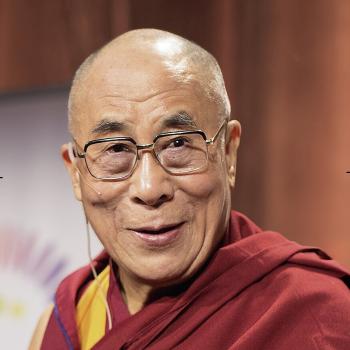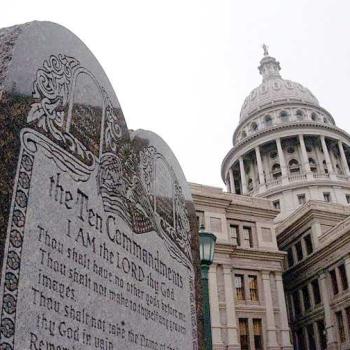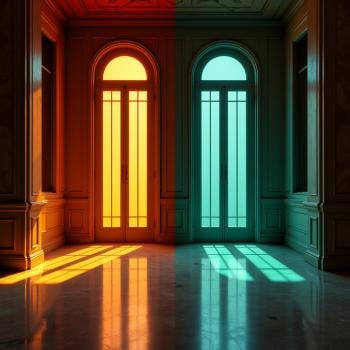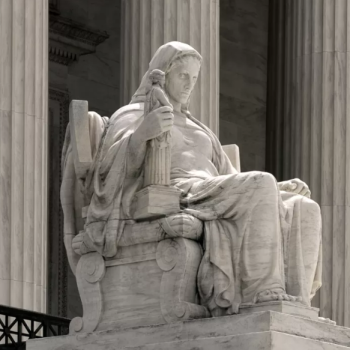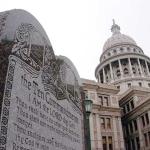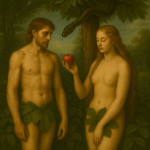In the 18th century establishment of religion, or designating an official state religion, was common in Europe and in the British colonies in North America. And U.S. founders Thomas Jefferson and James Madison were adamantly opposed to the practice. As these two men of Virginia were laying the foundations of religious freedom in the United States, their first priority was denying government the power to establish a religion. Freedom of religion, they reasoned, required abolishing establishment of religion.
Religious liberty is protected in the U.S. by the First Amendment of the Constitution, which was written by James Madison. Madison and Jefferson were close political allies who thought alike on the subject of religious liberty. Jefferson authored a Virginia law called the Virginia Statute for Religious Freedom that Madison supported. The statute, which passed in 1786, disestablished the Anglican Church in Virginia. It served as a model for the religion clauses in the First Amendment to the Constitution, ratified in 1791.
And at a time when the U.S. has the most conservative Supreme Court in 90 years, it’s imperative we don’t lose sight of what these founders intended.
Establishment and Disestablishment of Religion
Since religious “establishment” is an alien concept to Americans, I will try to explain it. An established church is the official state church of a country. For example, the Church of England is the established church of England. Today, it is not the established church of the entire United Kingdom, however. The Church of Scotland is separate from the Church of England. Wales disestablished the Church of England in 1920. There are Anglican churches in Wales, but they have no official relationship to the Welsh government. (The Church of England is also the “mother” church of the global Anglican Communion. Episcopal churches also are part of the Anglican Communion. Here is a FAQ that explains these various terms .)
As the established church of England, the Church of England has legislative and civic duties. Twenty-six bishops sit in the House of Lords, for example. Today the House of Lords is less powerful than it used to be, but it is still a legislative chamber and has a role in making laws and shaping public policies. It’s also common for established churches in Europe to receive income from the government, so that they are supported by taxes, but I don’t believe that’s true of the Church of England any more.
The Church of England also is responsible for such official events as state weddings, funerals, and coronations. The official head of the church is the British monarch, currently King Charles III. If you’ve watched the television series The Crown, you might have noticed that the Church and the Crown do get into each other’s business sometimes.
Religious Establishment in the Colonies
Let’s go back a few centuries. As British colonies appeared in North America, their colonial charters sometimes stipulated an established church. For example, the established church of the colony of Connecticut was the Congregational Church, per a charter granted in 1662 by King Charles II. But in the case of Virginia, the Anglican Church was established in the colony by its House of Burgesses in 1619.
Colonial Virginians were required by law to attend, and pay taxes to, an Anglican Church. Non-Anglican ministers could not preach without a license. Sometimes non-Anglican ministers were attacked by mobs or tossed into jail for not being Anglican. Some colonists thought it great fun to publicly dunk Baptists in rivers, mocking their practice of adult full-immersion baptism.
After Virginia and twelve other colonies declared themselves independent from Britain in 1776, the Virginia Anglican church declared itself severed from the Church of England and began to call itself “Episcopal.” Even so, this Episcopal Church remained the established church in Virginia, and the laws about mandatory attendance and tax revenue remained on the books. In 1777, the year after he wrote the magnificent Declaration of Independence, Thomas Jefferson of Virginia wrote the first draft of the Virginia Statute for Religious Freedom. He wanted to do away with establishment of religion and to remove government influence from religion entirely.
Jefferson Introduces His Bill
Jefferson’s statute was first introduced to the Virginia General Assembly in 1779. (Yes, the Revolutionary War was ongoing. It ended in Virginia in 1781, when the British General Cornwallis surrendered at Yorktown.) The bill made little progress at first. In 1784 Patrick Henry introduced another bill that would have allowed Virginia taxes to go to a church of the taxpayer’s choice. James Madison’s opposition to this bill is discussed in the previous post, James Madison and Religious Freedom.
The bill was supported by non-Anglican denominations, in particular Baptists, Presbyterians, and Methodists. They had been petitioning Virginia to do away with establishment for some time.
Thomas Jefferson was appointed Minister to France in 1784, which removed him from Virginia. But James Madison took up the cause of the Virginia Statute for Religious Freedom, and it passed into law in 1786. Today a section of it is embedded in the Constitution of Virginia (section 16).
What the Statute Provides
The new statute explained why establishment of religion is undemocratic and dangerous. Jefferson wrote that “Almighty God hath created the mind free” and that “to compel a man to furnish contributions of money for the propagation of opinions which he disbelieves and abhors is sinful and tyrannical.” In their various writings both Jefferson and Madison called for religion to be a matter of personal conscience, compelled by neither society nor government.
Here is the central part:
Be it enacted by General Assembly that no man shall be compelled to frequent or support any religious worship, place, or ministry whatsoever, nor shall be enforced, restrained, molested, or burthened in his body or goods, nor shall otherwise suffer on account of his religious opinions or belief, but that all men shall be free to profess, and by argument to maintain, their opinions in matters of Religion, and that the same shall in no wise diminish, enlarge or affect their civil capacities.
A Warning to Future Legislators
The statute ends with a warning that future legislators should not reverse the statute.
And though we well know that this Assembly elected by the people for the ordinary purposes of Legislation only, have no power to restrain the acts of succeeding Assemblies constituted with powers equal to our own, and that therefore to declare this act irrevocable would be of no effect in law; yet we are free to declare, and do declare that the rights hereby asserted, are of the natural rights of mankind, and that if any act shall be hereafter passed to repeal the present or to narrow its operation, such act will be an infringement of natural right.
All the people calling for the United States to declare itself a “Christian Nation” might want to spend some time with Jefferson. He would have said no. We know this because Jefferson wrote in his autobiography (emphasis added):
The bill for establishing religious freedom, the principles of which had, to a certain degree, been enacted before, I had drawn in all the latitude of reason and right. It still met with opposition; but, with some mutilations in the preamble, it was finally passed; and a singular proposition proved that its protection of opinion was meant to be universal. Where the preamble declares, that coercion is a departure from the plan of the holy author of our religion, an amendment was proposed, by inserting the word “Jesus Christ,” so that it should read, “a departure from the plan of Jesus Christ, the holy author of our religion;” the insertion was rejected by a great majority, in proof that they meant to comprehend, within the mantle of its protection, the Jew and the Gentile, the Christian and Mahometan, the Hindoo, and Infidel of every denomination.
This Is Important to Us Today
Thomas Jefferson was still in France in 1781, when delegates met in convention in Philadelphia and crafted the U.S. Constitution. James Madison played an influential role in the convention, and his peers called him “the Father of the Constitution.” Madison wrote the First Amendment to the Constitution, adopted in 1791, which is:
Congress shall make no law respecting an establishment of religion, or prohibiting the free exercise thereof; or abridging the freedom of speech, or of the press; or the right of the people peaceably to assemble, and to petition the Government for a redress of grievances.
Many people today, some of whom sit on the Supreme Court, want to skip over the “establishment of religion” bit and pretend it isn’t there. But it is there, and it’s clear that Madison and Jefferson intended it to prohibit the government from establishing any sort of religious observance that citizens might be compelled or pressured into joining. Once again, these two men believed passionately that religion must be a matter of personal conscience, not of peer pressure or government coercion.
The Story Continues
Thomas Jefferson became the nation’s third President in 1801. As president he made another significant contribution to religious freedom by coining the phrase “wall of separation between church and state.” That will be a story for another post.
Before he died in 1826, Jefferson requested that his authorship of the bill be included on his tombstone along with his authorship of the Declaration of Independence and his founding of the University of Virginia. These were the three accomplishments of which he was most proud. Serving two terms as President of the United States didn’t make the list.




